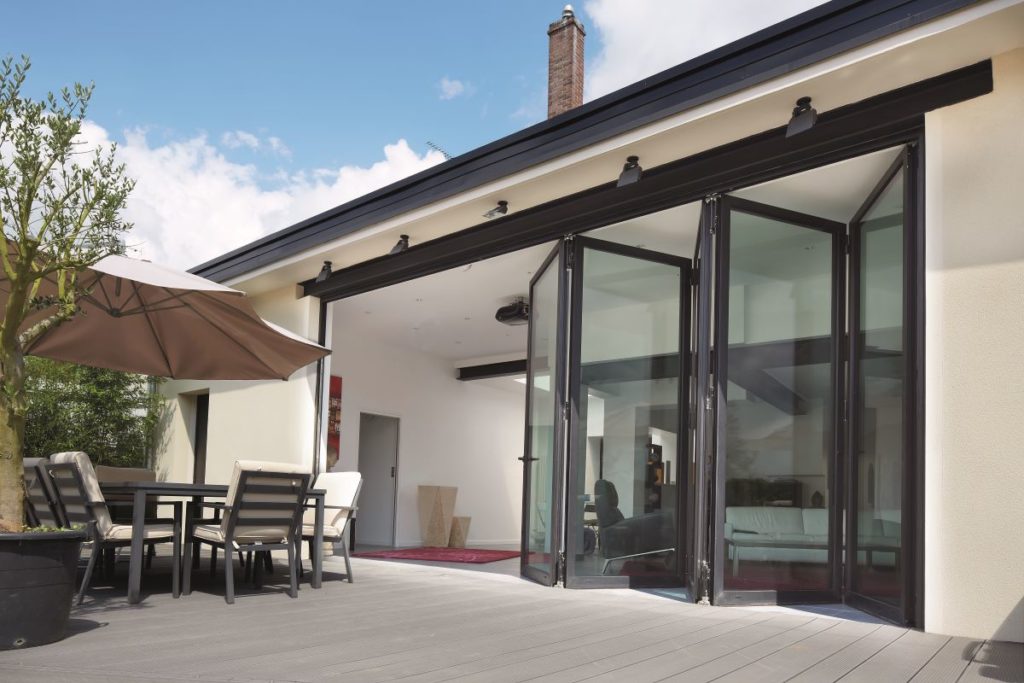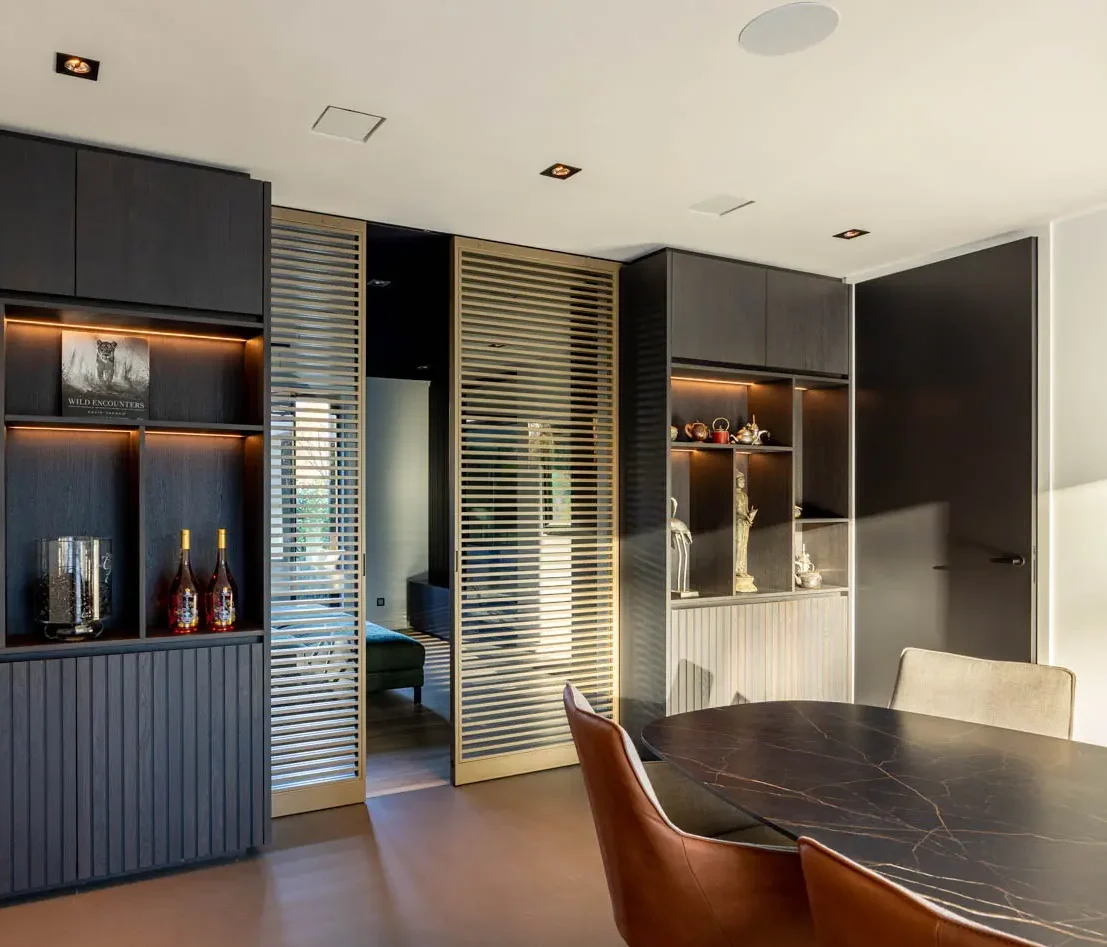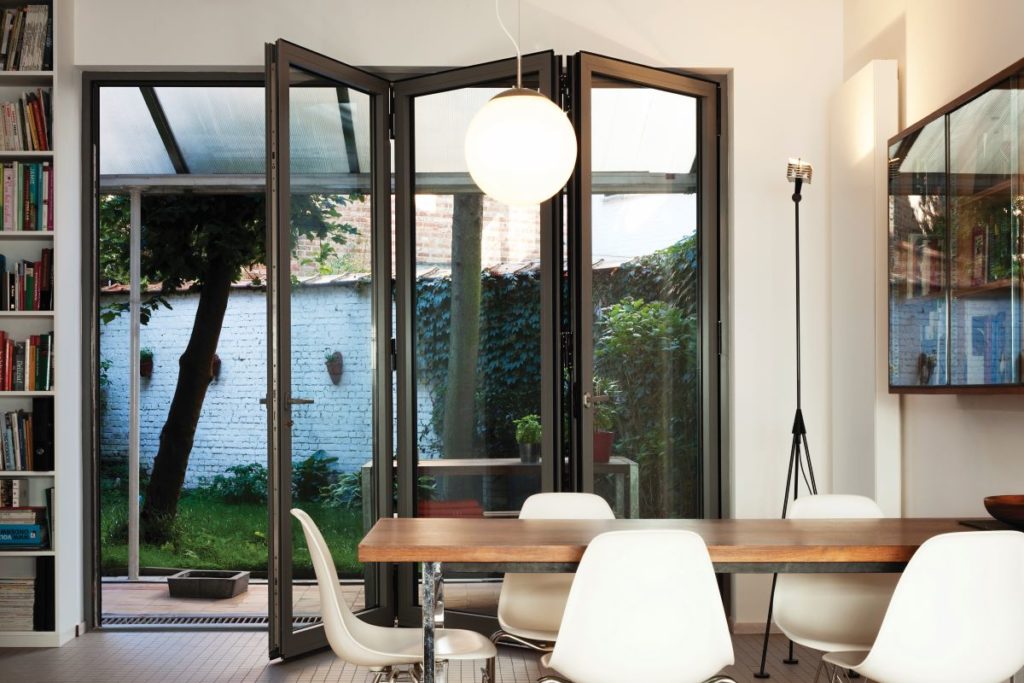Which is better?
Steel and fiberglass are the most common materials for front doors in the U.S. Because entryways are essential design pieces for any home, homeowners should know the key differences between steel doors and fiberglass to choose the best option. Either material can be an excellent choice, depending on your priorities.
Both types of doors have the same inner material (a polyurethane core), but their commonalities stop there. Steel doors are built to last and provide safety and durability in any climate. While fiberglass doors can be the more affordable option, the savings often come at the cost of a significantly lower lifespan.
Features of Steel Doors vs. Fiberglass Doors
The type of entry door you choose depends on your style, budget, needs, environment, and personal preferences. The best choice for a new door should consider options and potential issues.
Strength and Durability
- Steel entry doors are known for their strength, elevating security to a new level. They’re ideal for extreme weather conditions and built for even the most extreme wind and storm conditions. Beyond the strength of the material, Clark Hall offers thermally broken doors, which create an insulating barrier for extra protection.
- Fiberglass doors are still strong but won’t withstand extreme weather conditions and can shatter if enough force is applied. They’re not easily dented or scratched, but it can happen. This is particularly true with prefabricated doors.
Increased Curb Appeal
- Clark Hall doors are customizable from top to bottom. Having a high quality, fully unique door increases curb appeal which translates into added value for your home. Upgrading your entryway has been proven to offer a high ROI for homeowners.
Customization and Design Options
- Modern steel doors offer high levels of customization with color and design. Mainstream steel doors are typically minimalistic with simple paneling. Paneling can be embossed, and changing hardware is an option. Clark Hall steel doors are hand perfected by skilled artisans, resulting in a unique finish with individual touches. Homeowners should have any cutouts put into the door upfront, as cutting through our steel doors after the fact is impossible.
- Fiberglass doors have options for customization, but the end result is more of a cookie cutter look. Unlike steel, fiberglass doors can be painted and refinished as they begin to wear down, which may happen quickly. Glass inserts and hardware are options to upgrade fiberglass, as well as paneling.
Cost Comparison: Steel Doors vs. Fiberglass Doors
Both steel and fiberglass doors can range significantly in pricing, depending on the weight, design, and level of customization. A hand-crafted steel door is more expensive upfront, but will require much less maintenance as time goes on. It will also enhance the look of your home and add resale value. The price of our custom doors include glass and hardware, while other companies often charge more for each detail. weight and design. Fiberglass doors can be a lower upfront cost, especially if they’re a basic design. Because of less durability and shorter lifespan, buyers should factor in the cost of dent repair, refinishing, and repainting.
Making Your Decision
When considering the pros and cons of fiberglass vs. steel doors, focus on the most significant factors. Either choice will provide functionality, but the right choice comes down to a few things.
-
- Cost. Homeowners in the market for a new door should consider what price point they’re comfortable with since custom designs can cause a significant variation in budget.
- Maintenance. What level of maintenance are you comfortable with? While both steel and fiberglass doors are considered low maintenance, steel doors are low maintenance for a much longer period of time. Fiberglass often requires small repairs as well as buffing out and freshening.
- Customization Options. Exterior door curb appeal options are important to many homeowners. Natural light, personal expression, and matching theme may also be a consideration for entryways. Remember that fiberglass doors typically have a more minimalistic style with limited customization, whereas steel customization is seemingly endless.
Care Tips for Steel and Fiberglass Doors
The type of material a door is made from directly correlates to the care they’ll need. Steel and fiberglass doors are both considered low maintenance. Still, some upkeep is recommended to get more life out of your door. Avoid using a pressure washer on any door because water can get through the smallest cracks or gaps.
Steel Doors
Metal doors have the potential to rust, but regular cleaning can prevent it. For regular climates, clean your steel door as needed or twice a year after pollination. If you live near saltwater or in an environment with lots of snow, it’s a good idea to wipe your door dry with a microfiber towel as needed to cut down on extra moisture. a month is a good idea since extra moisture can cause rusting. Otherwise, twice a year with diluted soap and water is enough for maintenance. When cleaning the glass, always opt for an ammonia-free cleaner to prevent any damage to your door from overspray. Make sure to dry your door with a clean towel after cleaning. Clark Hall provides each customer with a touch up kit with the door color in case of any stain. It’s not recommended to use vinegar or any harsh chemical cleaner on steel doors, because the reaction with the metal in certain climates can vary.
Fiberglass Doors
Fiberglass doesn’t rust or warp like wood, but, like any door, it can be affected by dings, dents, or scratches. Fiberglass can also crack and peel when it’s exposed to direct sunlight or in a high moisture area. Regularly clean your fiberglass door with mild soap and water to keep it in top shape, then dry with a towel. Scratches can sometimes be buffed out and refinished, and homeowners can sometimes repair dents with a dent removal tool.
While there are pros and cons to any door you choose, both fiberglass and steel doors are an excellent choice for many reasons. Contact our experts if you need assistance choosing the door that will best suit your needs.
Frequently Asked Questions
What are the disadvantages of fiberglass doors?
Fiberglass doors have a lower life span and aren’t the top choice for security.
What type of door is best for an exterior door?
The best exterior door depends on a homeowner’s preferences and top priorities, like security, longevity, maintenance, and home value.
How does the longevity of steel doors compare to that of fiberglass doors?
When properly maintained, steel doors can last longer than fiberglass doors. The average lifespan of a fiberglass door is 15-20 years, whereas steel doors can last from 30 to 100 years.






